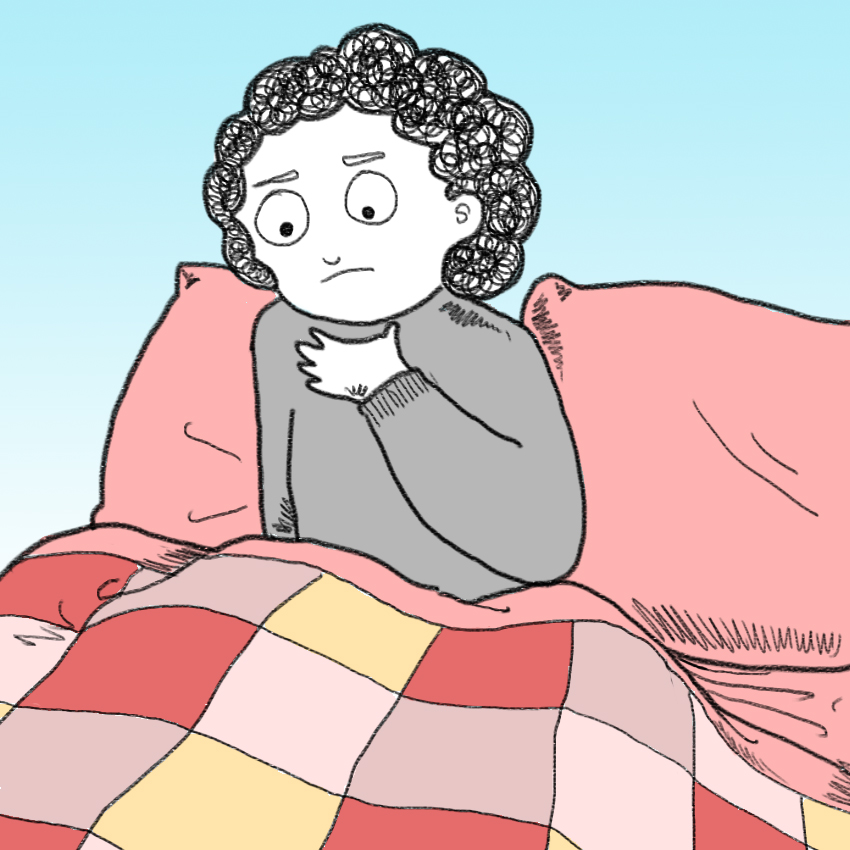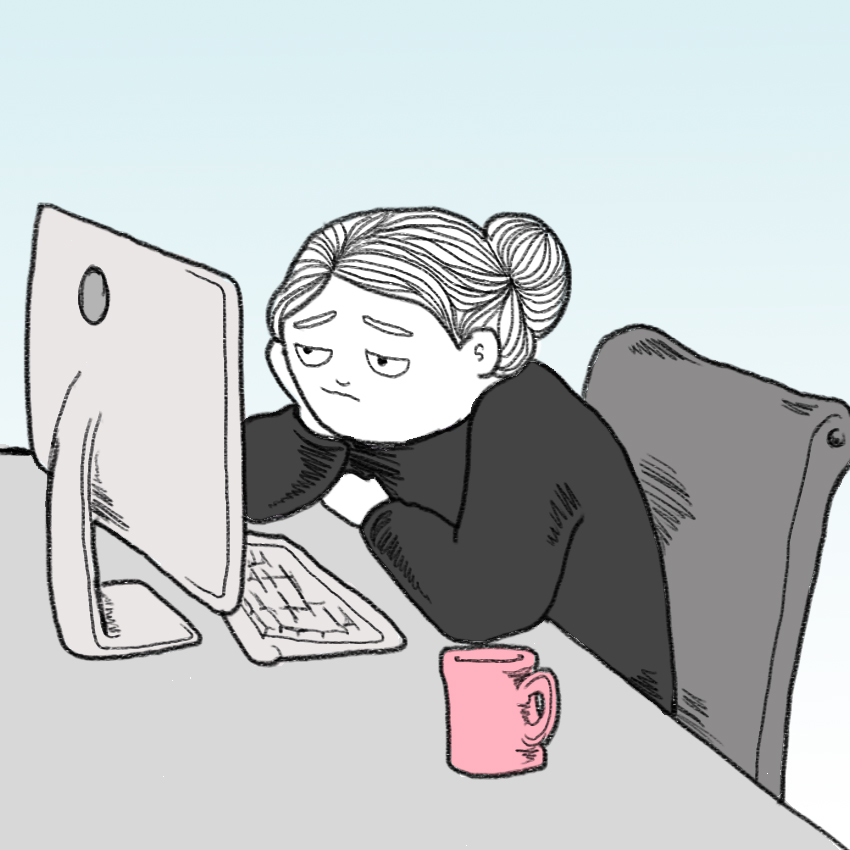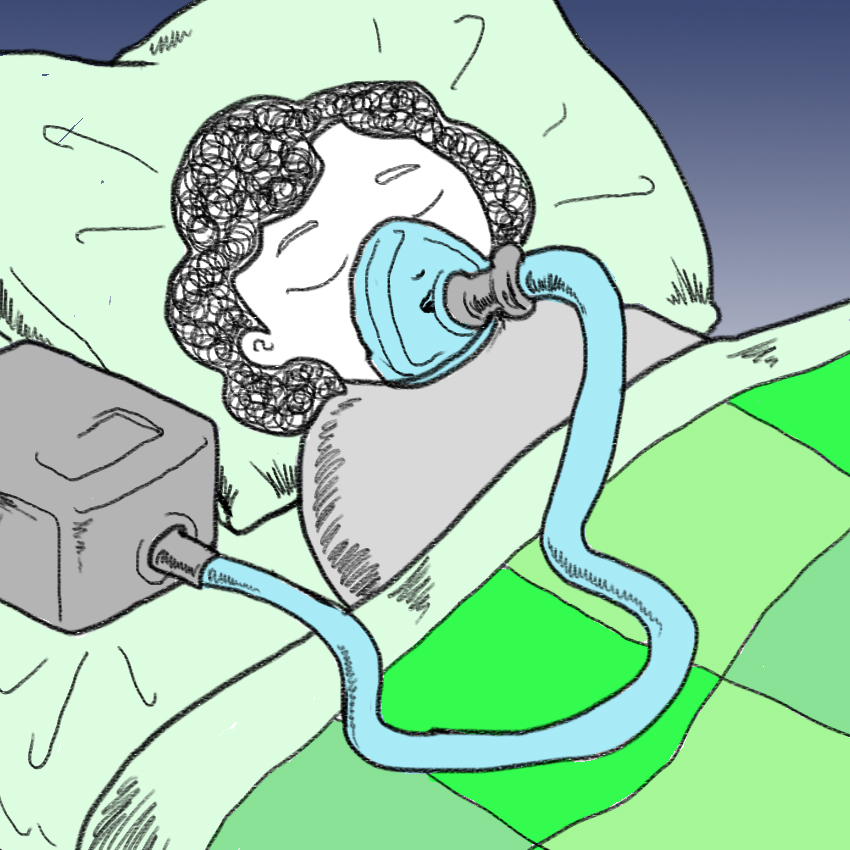Many of us struggle to fall asleep or stay asleep. We may snore or grumble in our sleep. Most of us can deal with these issues by learning how to sleep more soundly.
For people with sleep disorders, though, sleeping can be a much bigger issue.
Sleep apnea is a relatively common sleep disorder, but its effects can be serious. According to the National Heart, Lung, and Blood Institute (NHLBI), sleep apnea occurs when you have shallow breathing, or one or more pauses in your breathing while you sleep.
There are three main types of sleep apnea: obstructive sleep apnea, central sleep apnea, and complex sleep apnea syndrome.
It might sound like no big deal to stop breathing for a few seconds while you're asleep, but it can actually be very serious. Not only does it cause daytime sleepiness, it also makes your sleep quality poor and totally disrupts your night
To learn more about this sleep disorder, continue reading.
Thumbnail Credit: Wikimedia Commons / Wikimedia Commons
What Is Sleep Apnea?

According to the Mayo Clinic, "Sleep apnea is a potentially serious sleep disorder in which breathing repeatedly stops and starts."
The National Heart, Lung, and Blood Institute (NHLBI) explains that this sleep disorder often goes undiagnosed because there are no simple blood tests or easily noticed signs that doctors can spot during normal office visits.
Many people who have sleep apnea might not even realize it — often it takes a roommate or family member to notice it.
What Are The Symptoms Of Sleep Apnea?

There are a variety of sleep apnea signs and symptoms — some folks notice these on their own, while others may find out from a family member or sleeping partner.
Read below to find out more about sleep apnea symptoms!
Sleep Apnea Symptom #1: Loud Snoring

"One of the most common signs of obstructive sleep apnea is loud and chronic (ongoing) snoring," explains the NHLBI.
Many people who snore don't even realize it, since they sleep through it.
Snoring is usually loudest when you're sleeping on your back. Over time, your snoring may get louder.
"You likely won't know that you're having problems breathing or be able to judge how severe the problem is," the NHLBI says. "A family member or bed partner often will notice these problems before you do."
Sleep Apnea Symptom #2: Difficulty Sleeping

Another prominent symptom of sleep apnea is difficulty sleeping, or waking suddenly from sleep.
The Mayo Clinic explains that people with central sleep apnea may experience "abrupt awakenings accompanied by shortness of breath."
Waking up and feeling like you can't breathe can be scary — if it happens regularly, take note of it and tell your doctor.
People with sleep apnea may also experience insomnia, or difficulty falling and staying asleep.
Sleep Apnea Symptom #3: Waking Up With A Sore Throat

Many of sleep apnea's most noticeable symptoms are things you will notice during the daytime.
One of these symptoms is waking up with a sore throat or dry mouth — this can indicate that your breathing has been irregular during sleep.
Sleep Apnea Symptom #4: Sleepiness During The Day

Many people with sleep apnea will have excessive daytime sleepiness, or hypersomnia, explains the Mayo Clinic.
If you have sleep apnea, you may also have a harder time concentrating, retaining new information, or learning new things.
Other Symptoms

Although they're slightly less common or noticeable, there are a variety of other sleep apnea symptoms.
These include forgetfulness, daytime irritability, mood swings, waking up frequently during the night to urinate, attention problems, and recurring morning headaches.
Sleep Apnea Test

According to the NHLBI, sleep apnea is diagnosed by a doctor through medical and family history, a physical exam, and sleep studies. If you are diagnosed with sleep apnea, your doctor might refer you to a sleep specialist.
The most common sleep test for sleep apnea is a polysomnogram (PSG). This records blood pressure, eye movements, heart rate, and brain activity.
The test is completely painless — you go to sleep at a sleep center with sensors attached to your body, which measure how well you're breathing while you sleep.
Sleep Apnea Treatments

If your doctor diagnoses you with sleep apnea, there are a few different treatments they may suggest.
The Mayo Clinic explains that for mild sleep apnea cases, doctors may just suggest lifestyle changes. For more severe sleep apnea, they may suggest airway pressure devices or oral devices.
Medical Treatments

The most common device prescribed for treating sleep apnea is a continuous positive airway pressure (CPAP) device.
A CPAP looks like a mask that is placed over the nose and mouth during sleep. It provides slightly more pressurized air, which keeps your upper airway passages open.
Although using a CPAP can be cumbersome, it is the most reliable method of sleep apnea treatment.
Two other common devices are bilevel positive airway pressure (BiPAP) devices and expiratory positive airway pressure (EPAP) devices.
Sometimes doctors will recommend oral devices designed to keep your throat open. While these are often more comfortable and easier to use, they aren't as reliable as CPAPs.
In rare cases, doctors may recommend surgery to treat sleep apnea, but only after other treatment options are explored.
Home Treatments

For many people, lifestyle changes may be enough to deal with sleep apnea.
Some recommended changes include: quitting smoking; avoiding sleeping pills, alcohol, and certain medications; sleeping on your side or stomach instead of your back; using nasal spray to keep your nasal passages open at night; losing excess weight; and exercising regularly.
Do you have sleep apnea or know someone with the disorder? Please SHARE this article on Facebook to spread awareness!




